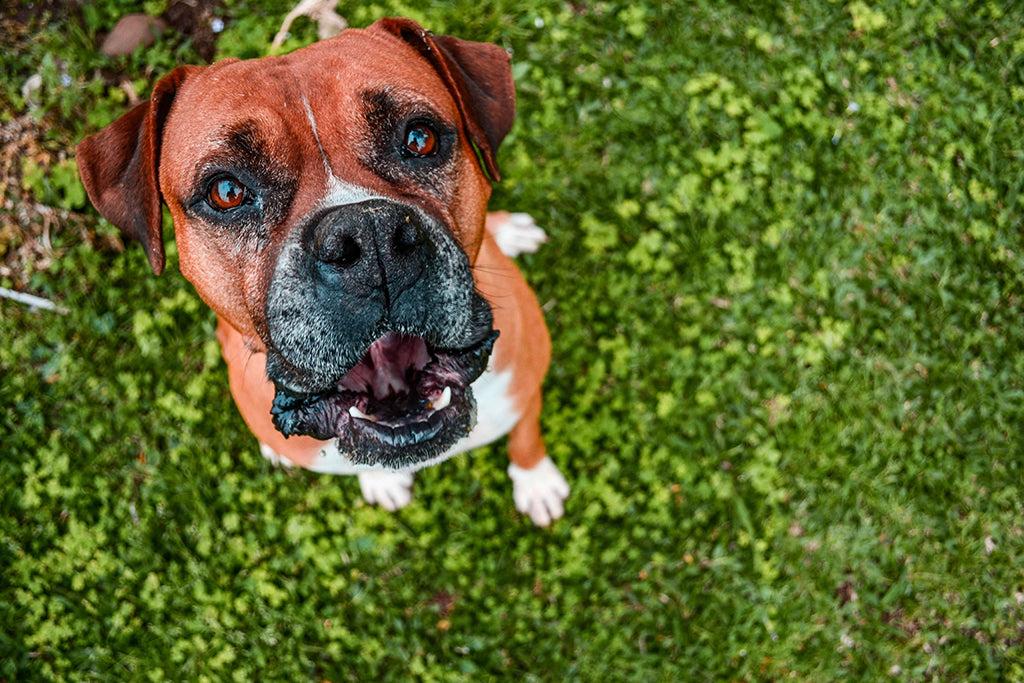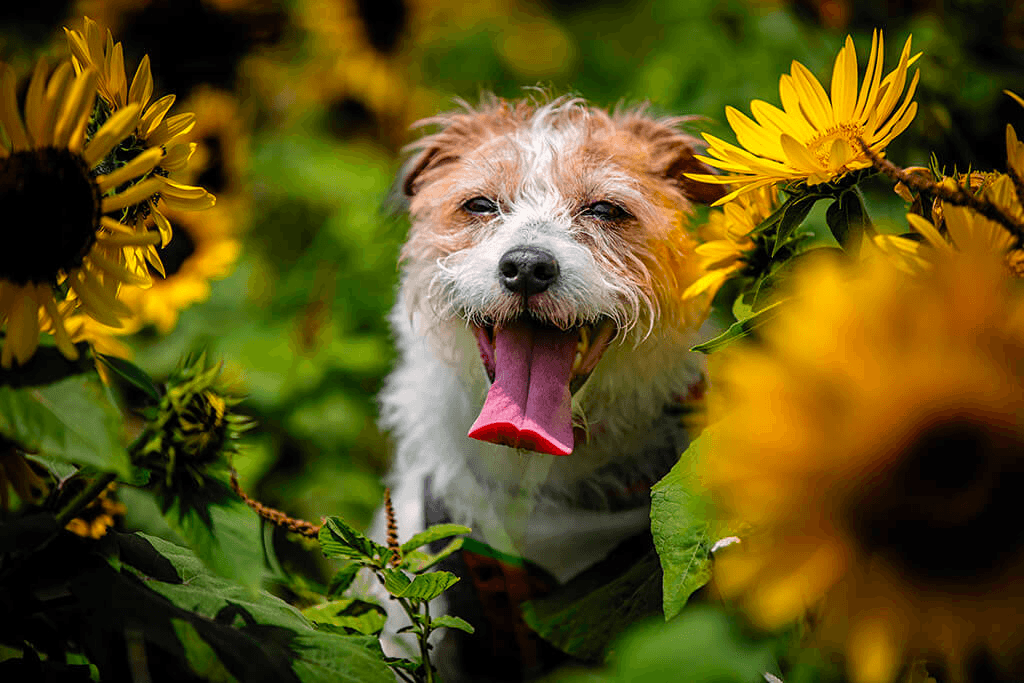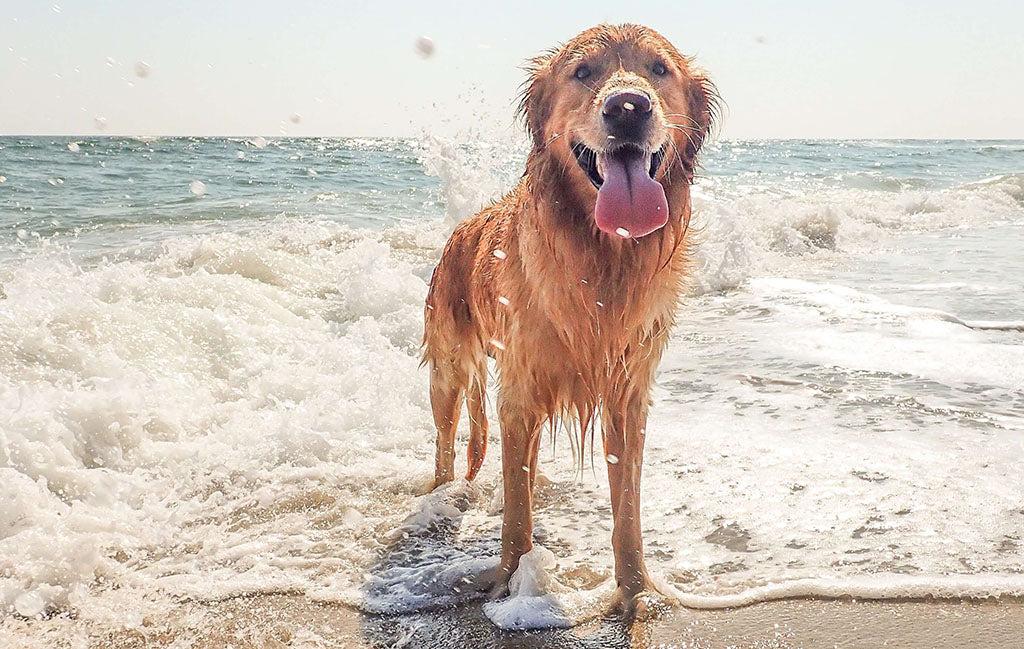This article will explore the causes of folliculitis in dogs, symptoms to watch for, how folliculitis is diagnosed and treated by veterinarians, and at-home remedies you can try.
- Home/
- Dog/
- Health & Wellness/
- Folliculitis In Dogs: Symptoms, Treatment & Prevention
Folliculitis In Dogs: Symptoms, Treatment & Prevention

While most dogs are covered in fur, most dog enthusiasts know that the health of the skin under the fur determines haircoat quality and gives an indication of a dog’s overall health. The skin is the largest organ in the body. It serves as a protective barrier that shields the rest of the body from harmful invaders, such as bacteria or fungi.
Many things can negatively impact skin health, causing inflammation that leads to redness, irritation, itchiness, and hair loss.
Folliculitis is a common skin condition in dogs that causes inflammation of the hair follicles and can lead to discomfort, itching, and visible skin issues.
But what causes folliculitis in dogs, and how can you identify and treat it effectively?
What Is Folliculitis in Dogs?
Just like humans, dogs have hair follicles in their skin that contain the root of the hair. Dog folliculitis is a term veterinarians use to describe inflammation of hair follicles due to infection, injury, or irritation. Folliculitis in dogs can occur anywhere on the skin, including the belly, paw, and whisker areas.
Folliculitis is further divided into two categories: superficial and deep. Superficial folliculitis is not as severe and only involves part of the hair follicle, deep folliculitis is more severe and involves the whole hair follicle.
What Causes Folliculitis in Dogs?
Folliculitis is a blanket term for inflammation of the hair follicle. Anything that irritates a hair follicle or the skin surrounding a hair follicle. The most common causes of dog folliculitis include:
- Skin allergies
- Bacterial skin infections, which can result in bacterial folliculitis
- Fungal skin infections, otherwise called Malassezia dog folliculitis
- External parasites, including mites and fleas
- Hormonal imbalances, including hypothyroidism and Cushing’s syndrome
- Compromised immune system secondary to medication or severe illness
- Trauma to the skin
- Irritated skin folds
- Acral lick dermatitis
- Poor grooming

Symptoms of Folliculitis in Dogs
Folliculitis is one of the most common skin problems, most likely because the symptoms of hair loss and itching are obvious, and pet owners don’t like to see their pets suffer, so they call the vet! Common signs of folliculitis on dogs include:
- Redness and swelling around hair follicles
- Pustules, papules (reddish bumps), or crusty bumps
- Hair loss in affected areas
- Itching, scratching, or discomfort
- Hyperpigmentation (darkening of skin)
- Blackheads
- Skin odor
In addition, severe or deep folliculitis may be painful and drain pus.
Short-haired dogs may develop a ‘moth-eaten’ appearance to their haircoat, with small tufts of hair and discoloration of white hair.
Symptoms may be more difficult to see in long-haired dogs but can include a dull, lusterless hair coat, crusty skin, and excessive shedding.
How Is Folliculitis Diagnosed?
Folliculitis is relatively simple to diagnose, however, the symptoms can mimic several other skin conditions, such as ringworm or pemphigus, that require different types of treatment than folliculitis. Therefore, it is important to get an accurate diagnosis before starting treatment.
This is where a veterinarian can help: they have the right tools and knowledge to figure things out. If you suspect your dog has folliculitis, schedule an appointment with your local veterinarian as soon as possible. Your veterinarian will conduct a full physical examination of your dog and will likely run a few tests that can include:
- Skin scrapings and microscopic analysis of skin and hair
- Blacklight to check for ringworm
- Fungal or bacterial culture
- Skin biopsy and histopathology
While folliculitis is a relatively mild condition, it can sometimes indicate a more severe underlying condition that requires additional testing and treatment. If your vet suspects an underlying condition, they will recommend relevant additional tests that could include allergy testing or blood work.
Treatment Options for Dog Folliculitis
Left untreated, folliculitis can lead to permanent hair loss due to scarring of the hair follicles. Fortunately, there are many treatments available for folliculitis, and in many cases, the condition can be completely cleared up. Other conditions may require ongoing management: it depends on the underlying cause. Veterinary treatments can include:
- Antibiotics for bacterial infections (bacterial folliculitis dog treatment)
- Antifungal medications for fungal infections (Malassezia folliculitis dog treatment)
- Topical treatments, including shampoos, lotions, leave-on conditioners, sprays, or ointments
- Prescription medication for allergies (Apoquel, Cytopoint, steroids, antihistamines)
Dogs are often prescribed concurrent external treatment (such as medicated shampoo) and internal treatment (antibiotics). If your dog has an underlying disorder, such as allergies that cause folliculitis, that will also require treatment.
If your dog has mild symptoms such as mild itching and excessive dandruff, then you can try a home remedy. The best thing to do is to use an over-the-counter follicular flushing shampoo that contains 3% benzoyl peroxide.
The most important part of using shampoo is contact time: lather your dog up and let the shampoo sit on the skin for 5-10 minutes before thoroughly rinsing. Use room temperature water for rinsing and repeat shampooing daily until the condition resolves. If there is no improvement within a day or two of starting treatment or the symptoms get worse, stop using the shampoo and call your vet. In addition, I always recommend consulting with your vet before starting any home treatment.
If your dog has swollen or painful deep folliculitis, you can gently apply warm Epsom salt solution compresses to the affected area for 5-10 minutes. You can also apply aloe vera gel to the affected area, but make sure your dog doesn’t lick off the gel.

Preventing Folliculitis in Dogs
An ounce of prevention may save your dog’s haircoat. While you can’t always prevent folliculitis, you can do things to benefit your dog’s overall health, which will boost skin health. Prevention strategies include:
- Regular grooming to keep the skin and coat healthy
- Ceramide shampoo to strengthen the skin’s protective barrier
- Bathe regularly, but not too often (will dry out and irritate the skin)
- Proper flea and tick prevention
- Balanced diet to support immune health
- Quick attention to minor skin issues to prevent infection
- Annual examination with your veterinarian to catch problems early
- Address any underlying disorders (such as allergies or hormonal conditions)
- Regular exercise and mental stimulation to reduce stress
When to See a Vet
If your dog has folliculitis, when do you go to the vet?
Well, if this is the first time your dog has displayed the symptoms, I would recommend seeing a veterinarian for a diagnosis, as it may not be folliculitis that is causing the problem. If your dog has had folliculitis before or has a predisposing underlying condition and is experiencing a flare-up, call your veterinarian.
If you have a good relationship with them, you may be able to speak to them on the phone and get some advice about what to do at home. They can tell you definitively if you need to bring the dog in or not.
If you are treating your dog at home and they are not improving or are getting worse, then you should go to the vet. In addition, signs that your dog needs to see a vet as soon as possible include:
- Spreading redness or hair loss
- Persistent itching or skin cysts
- You start itching or develop a rash
- Loss of appetite or acting sick in any way
- Treatment isn’t resolving the issue
Final Thoughts on Folliculitis in Dogs
Folliculitis can be frustrating and unsightly, not to mention distressing to your dog! However, with a veterinarian to guide you and the right tools, you can manage or cure the condition in many instances.
Usually, it requires a combination of veterinary and at-home care to treat and prevent folliculitis, so always remember to consult with your veterinarian before starting treatment and seek help if you aren’t getting anywhere. With the right steps, you can restore your dog’s skin health, vigor, and shiny hair coat.
Sources
Author Stregowski, Jenna “Folliculitis In Dogs” The Spruce Pets, Apr 08. 2020 https://www.thesprucepets.com/folliculitis-in-dogs-5073164
Author Khuly, Patty VMB MBA “Folliculitis In Dogs And Cats” Embrace Pet Insurance https://www.embracepetinsurance.com/health/folliculitis#:~:text=Folliculitis%20is%20a%20term%20that,kind%20of%20canine%20skin%20infection.
Author Pebworth, Kelly “Folliculitis In Dogs” Top Dog Tips, Jul 29. 2019 https://topdogtips.com/folliculitis-in-dogs/
 S
S



